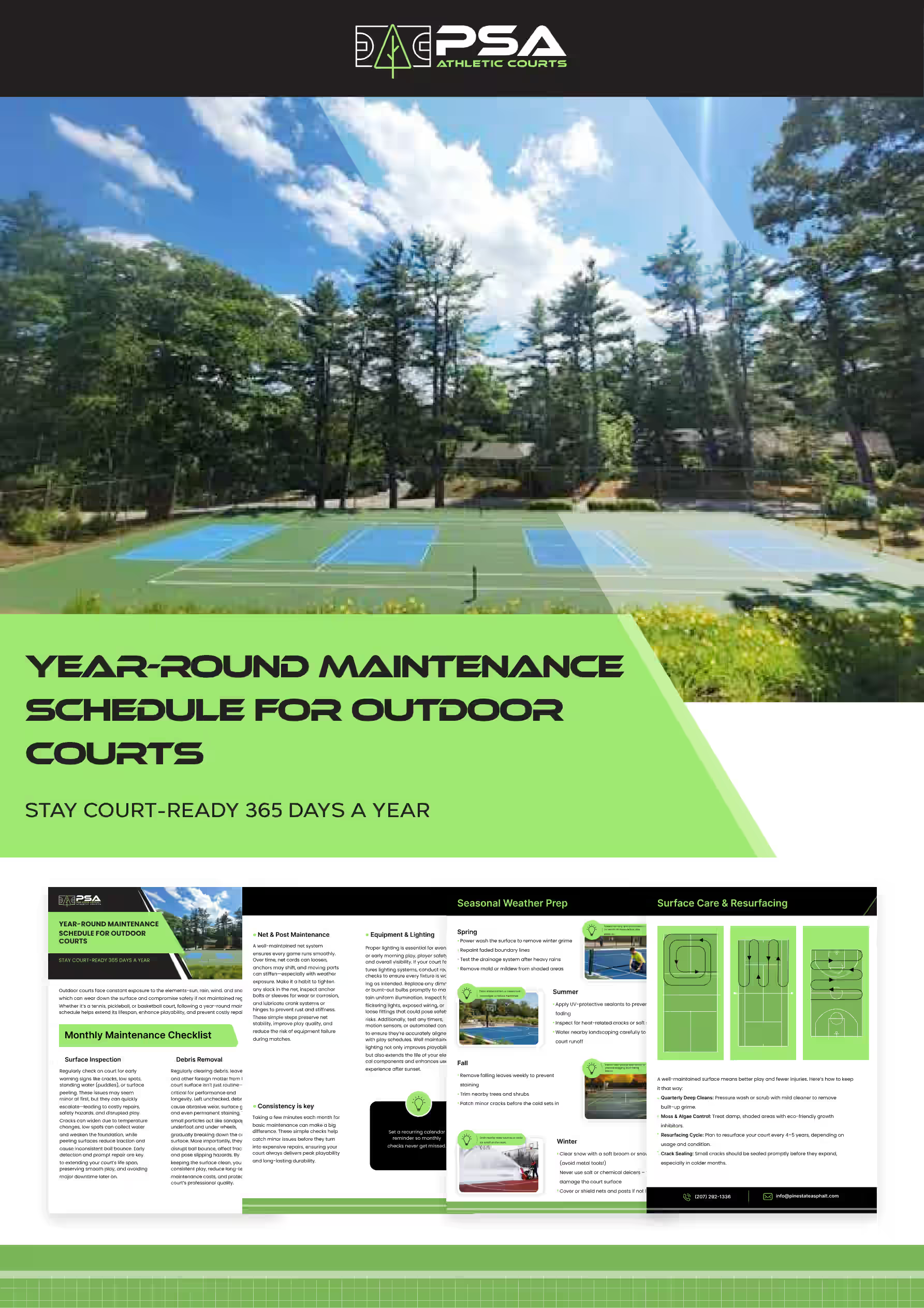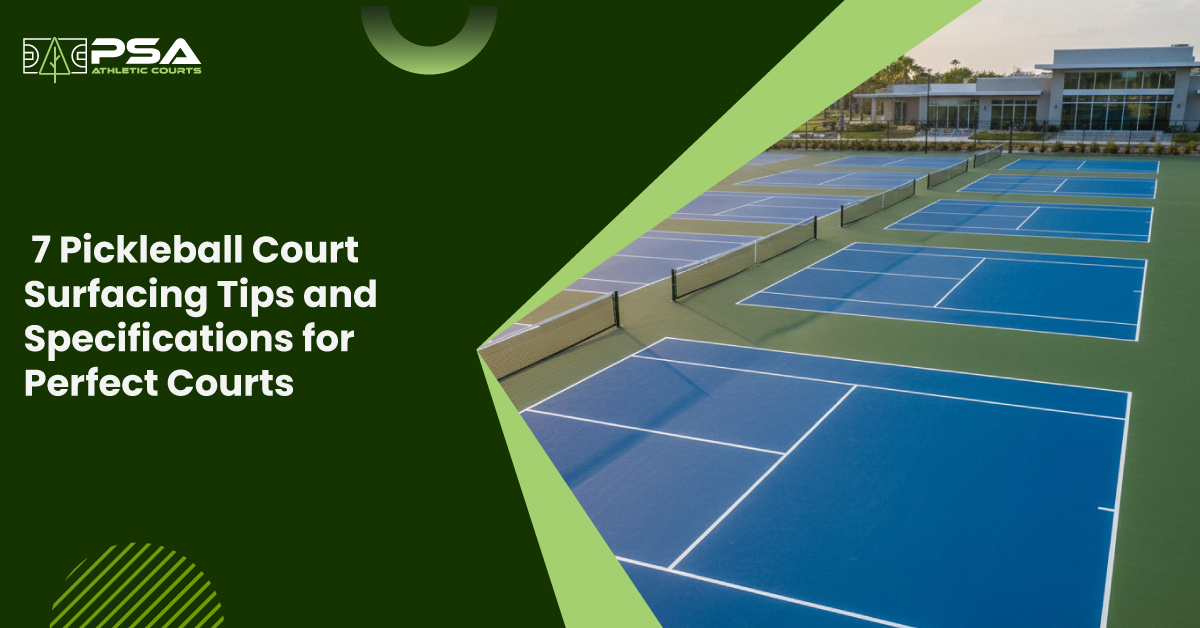From tiny cracks and lost shine to reduced bounce, they are all a sign of something bigger. Your court is aging and like any car needs regular maintenance or a house needs a fresh coat of paint, your indoor court too needs attention.
If you have been noticing this lately with your court, it's time to resurface. Don’t know where to start? This guide by Pine State Courts is here! We will discuss everything from how resurfacing goes beyond mere aesthetics and the six cost effective indoor courts resurfacing solutions that deliver results.
Why Resurfacing Matters More than You Think
Over time, all indoor courts whether for basketball, badminton, or multi-athletic courts face relentless wear and tear. This leads even the highest-quality surfaces to degrade, however with regular maintenance and resurfacing, you can prevent this from happening too soon.
Here’s how a well-timed resurfacing does more than just restore the court’s looks:
- Boosts playability through consistent bounce and superior traction.
- Reduces the risk of player injuries with an even court surface.
- Prevents major repairs or full replacement, saving money in the long run.
- Increases player satisfaction and membership retention for commercial indoor courts.
- Strengthens the facility’s reputation as a top-quality, safe, and enjoyable space.
Wondering when to resurface? Here is an insight into the best time for pickleball court resurfacing to boost safety, playability, and longevity.
Understanding the Cost Factors of Indoor Court Resurfacing
It all begins with widening of small cracks, peeling of coatings, reduced traction and turns into a hazard for both player safety and performance. Also, if not tended to well in time these will add to the time for repairs and the resurfacing cost.
Wondering what else contributes to the cost of indoor courts’ resurfacing? Here’s a breakdown of the cost factors of indoor court resurfacing:
Size of the court
It goes without saying that the resurfacing cost will be different for a full professional court and a customized smaller or half-court. It will not just add to the material cost but to the labor cost as well.
Resurfacing material
The type of resurfacing material has a lot to add in the resurfacing cost. Apart from the material price for asphalt, concrete, acrylic, or clay court , adding rubber layers or cushioned acrylic coatings for player comfort and safety also increase this cost.
Court’s existing condition
If your court needs extensive surface repairs beyond the minor crack repairs or peeling issues, it will contribute to the resurfacing cost. Any drainage problems or birdbaths on the surface also add to it.
Labor cost
Cost of labor is yet another factor that affects the resurfacing cost. Depending on the location, court size, and extent of repairs, this cost will be different for different courts.
Any additional features
Any add-ons like fencing, lighting, and windscreens, etc. also decide the cost of indoor court resurfacing. Customization of logos, or family crests have a lot to contribute here.
The 6 Most Cost-Effective Indoor Courts Resurfacing Solutions
The court material you choose to resurface with, affects everything: the player’s performance, safety, durability, and the maintenance the court needs. Here’s an easy list by Pine State Courts that covers the six resurfacing options for your indoor court:
1. Acrylic Coatings
Acrylic is an easy choice for resurfacing an indoor court. It offers the benefit of cost-effectiveness with its durability, low cost material, and a quick resurfacing time. The resurfacing procedure involves cleaning, prepping the court, patching surface cracks, applying the primer, and finally several coats of acrylic coatings.
Best for: Courts whose base is in a good condition and needs refresh rather than structural repairs.
Cautions: It doesn’t address any deep or structural issues.
2. Polyurethane
It is a durable synthetic court material that offers consistent bounce, reduces impact, and enhances player comfort. This along with the low VOC emissions of its water-based formulations and high load bearing capacity make it a popular choice for resurfacing of indoor courts.
Best for: Indoor courts used for basketball, volleyball, multipurpose use, where athlete comfort is important.
Cautions: It has a slightly higher cost when compared to plain acrylic.
3. Modular Tiles
Synthetic modular tiles or panels offer easy installation as they lock with each other over the base. It offers a good bounce and traction, along with player comfort and safety. It offers cost-effectiveness by avoiding heavy coatings while the damaged tiles can be replaced individually instead of resurfacing the entire court.
Best for: Multi-use indoor spaces where you might convert between sports, or when minimal downtime is essential.
Cautions: The upfront cost of these tiles may be higher and don’t offer a seamless surface like other coatings.

4. Synthetic Turf
Installing an indoor-grade synthetic turf is another cost-effective indoor court resurfacing solution. It is specially designed for high traffic, indoor athletic courts for consistent performance, excellent shock absorption, and reduced maintenance. Its fast installation supports year-round play in indoor facilities.
Best for: Multi-athletic indoor courts with reduced impact on joints and easy maintenance.
Cautions: Up-front installation cost may be higher than a simple recoat, may require a different line-marking approach.
5. Hardwood Floors
Hardwood is a common surface for indoor courts for basketball, volleyball, tennis, and gym flooring. The resurfacing procedure involves sanding the existing hardwood, repairing any damaged planks, then reapplying stains, and sealants, etc. It is a cost-effective investment as it prevents full surface replacement while still extending the court’s life and improving player performance.
Best for: Facilities with quality wood floors, especially in school gyms, colleges, or performance arenas.
Cautions: If the wood is very damaged (warped, large cracks), full replacement may still be needed.
6. Partial Resurfacing
Another cost effective solution is identifying the localized problem areas (cracks, delamination zones, patches) and treating just those zones. This partial resurfacing instead of resurfacing the whole court saves up on the cost while still lending a superior playing surface for players.
Best for: Courts with limited damage or aging, where most areas are still in good condition.
Cautions: If the color or texture of the resurfacing material do not match, it may look patchy.
Tips to Choose the Right Court Resurfacing Option
The choice of indoor court resurfacing is an important one and the wrong choice will not only harm your facility but the players too. Here are a few tips to help you pick a solution that delivers performance, durability, and cost efficiency:
1. Don’t skip a thorough site audit
Contact professional indoor court builders to inspect the court. They will check the condition of the underlying slab, detect any cracks, leveling, and drainage issues. This ensures you get the best possible resurfacing solution.
2. Match your resurfacing goals to the use patterns
Each athletic court or facility has different performance needs be it a community gym, an elite basketball club or an occasionally used multi-athletic court. Assessing usage levels is important to find the right balance between costly materials and underperforming budget-friendly options.
3. Check compatibility with the existing court surface
Some surface coatings require special primers or must bond to a certain substrate for a seamless result. It is therefore important to talk to your court designer about chemical compatibility to avoid any delamination issues.
4. Plan in advance for any downtime
Resurfacing an indoor court may take anywhere from a few days to a few weeks depending on the extent of damage and the scale of your athletic facility. Consider what suits you best: a phased resurfacing or shutting down the entire facility. Modular tiles or fast-curing systems help reduce downtime.
5. Consider the lifecycle cost vs. the upfront cost
Don’t just compare material costs but also factor in the long term upkeep costs for maintenance, recoat cycles, repairs, and eventual replacement cost over 10-20 years.
6. Work with experienced court builders
Even the best materials can fail with poor installation. It is therefore important to seek court builders with experience in building indoor courts. At Pine State Courts, we hold expertise in building everything from professional tennis, basketball, pickleball, and multi-athletic courts to backyard half court or customized courts.
7. Maintain and monitor for signs of damage early on
The job doesn't end after resurfacing but actually begins the cycle of regular cleaning, correcting minor damages early, and doing periodic inspections to prolong the life of the court.
Takeaway
Resurfacing an indoor court is as much about smart planning as it is about the materials you choose to resurface with. An understanding of the cost drivers and weighing down the six proven resurfacing options (from acrylic recoats to modular overlays and synthetic turf), helps you get a high-performance court without overspending.
At Pinestate Courts, we combine our technical expertise, quality materials, and practical cost effective solutions to deliver long-lasting results. Contact us to book a site audit today!
Frequently Asked Questions
1. How often should an indoor court be resurfaced?
An indoor court should be resurfaced every 4 to 8 years. This time is dependent on various factors like the extent to which the court is used and how well it is maintained.
2. Can resurfacing fix cracks and uneven surfaces?
Yes, resurfacing can fix cracks and uneven surfaces. It involves repairing these damages by filling in gaps and layering a resurfacer on top for an even surface.
3. Is resurfacing cheaper than replacing the entire indoor court?
Yes, resurfacing is cheaper than replacing the entire indoor court. Resurfacing addresses only the surface level damages while replacing the court involves demolishing the existing court and building it from grounds up.
4. Can all types of indoor courts be resurfaced?
Yes, all types of indoor can be resurfaced including concrete, modular tiles, acrylic, and synthetic turf, etc. An exception to this is the carpeted courts which can’t be recoated and need replacement of the carpet.
5. Does resurfacing improve traction and player safety?
Yes, resurfacing improves the traction and player safety with an even surface that provides better grip. It boosts player performance and reduces the risk of injury by slipping, falling, or sprained ankles.
6. How can I choose the best resurfacing solution for my indoor court?
You can choose the best resurfacing solution for your indoor court by considering the extent of court usage, the location and weather conditions, your budget for resurfacing, and your performance and longevity goals. It is also important to compare the upfront cost vs. the long-term lifecycle costs.
DOWNLOAD OuR
FREE GUIDE
Stay on top of your court maintenance all year. Whether it's rain, snow, summer, or fall - we've got you covered with this complete guide.
Get a complete month-by-month breakdown to keep your outdoor courts safe, clean, and game-ready.










